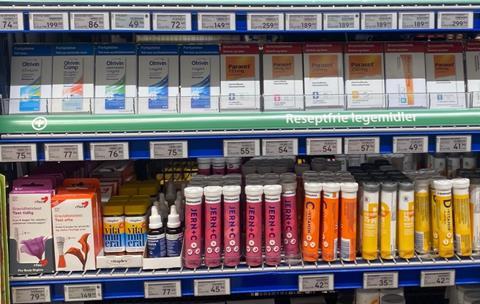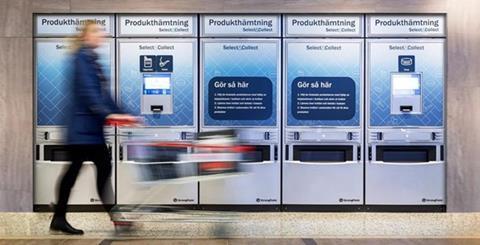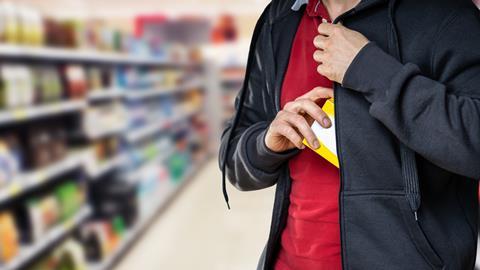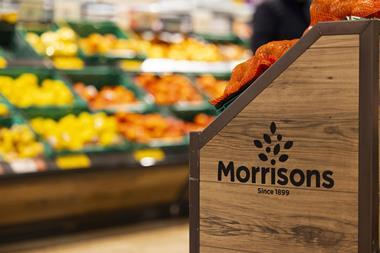With the number of retail thefts growing in the UK, how can grocery businesses protect the sales of high-theft items and create a safer shopping environment for staff and consumers?
Theft is a significant and growing issue for grocery retailers in the UK and other countries.
The British Retail Consortium has been lobbying the government to advocate for tougher sentences for individuals who target retail workers. This comes in light of staggering data showing that incidents of violence have nearly doubled since the pandemic, and that almost a billion pounds’ worth of goods have been stolen from retailers, despite retailers allocating more than 700 million pounds towards crime prevention measures.
What is the impact?
In response to this, many retailers, especially in the grocery sector, have implemented various safety precautions, ranging from locks and tags to prohibiting customers from selecting items off a shelf without staff intervention. Some have even taken more extreme measures, such as completely removing certain products from their stores.
These restrictions apply to a variety of goods, including razor blades, beauty products, prescription medications and even fresh produce. While this may appear to be a straightforward and immediate solution to the problem, it comes with two significant drawbacks.
Firstly, it’s likely to lead to a decrease in sales as it can make it slightly more challenging for honest shoppers to purchase their items, especially when combined with self-checkout systems that may require customers to wait for assistance. Secondly, these tags do not deter the most persistent thieves who are not afraid to make a quick escape or even confront security staff.
Thousands of stores in continental Europe and much of Scandinavia have been implementing a solution that is currently unheard of in the UK: they store high-value or high-theft-prone items in secure dispenser units that make the items almost impossible to steal. This system is known under the brand name of Vensafe in Continental Europe and in the UK as ‘Select & Collect’ (a product supplied by StrongPoint).
“The solution can result in a 5-10% increase in sales of items that would otherwise have security tags or other ‘on-item’ security solutions on top of a reduction of shrinkage from theft to zero.”
The beauty of this solution is that, rather than diminishing sales, it frequently results in an increase in sales of high-theft items when compared to employing security restrictions on these products. According to our insights, it can result in a 5-10% increase in sales of items that would otherwise have security tags or other ‘on-item’ security solutions. This is on top of a reduction of shrinkage from theft to zero.
How is this possible?
By making the customer journey easier and reducing the friction.
Firstly, it allows for a ‘normal’ shopping journey for the end-consumer compared to when interacting with security-tagged items. Instead of selecting a box of razor blades with a security box around it, they choose a security-free ‘dummy’ product box that is identical to the real thing (except empty). Alternatively, retailers can use a substitute ‘product card’ resembling an Apple or Netflix gift card. The item is then paid for just like in any standard shopping journey, and the customer receives a receipt with a barcode.

Subsequently, the item is paid for just like in any standard shopping journey, and the customer receives a receipt with a barcode. This receipt is then taken to the dispenser unit, usually positioned right after the checkout area or near the exit, scanned, and the item is automatically dispensed.
These solutions are so widespread in certain Scandinavian countries that it’s nearly impossible to find a grocery store without them. A common item dispensed is tobacco products, as the solution also serves as a tobacco concealment method.
Moreover, the dispenser units can be used in conjunction with self-checkouts. For instance, dummy products can be bought at a self-checkout and then exchanged for a ticket with a barcode, which can be redeemed from a product dispenser located just outside the self-checkout area.
The solution has been thoroughly tested in thousands of stores and can be quickly installed and integrated in as little as a couple of weeks.

To quote one customer: “I would recommend Vensafe. The benefits are numerous, not least the security and safety it brings to the staff. When we had established routines for refilling them, we experienced higher sales, in addition to other advantages. It’s also good financially with reduced shrinkage as a bonus.”
Most importantly, it enhances safety for both store staff and customers, while simultaneously improving the shopping experience for shoppers and increasing the sales of many high-theft-prone items compared to current solutions.
If you are grappling with theft and aiming to create a safer store experience for your customers and staff, we would suggest that a part of the solution to the problem is already live in thousands of stores in Europe and can be in your stores by contacting StrongPoint.
To find out more about Strongpoint’s Vensafe solution contact info@strongpoint.com or visit our website here.























